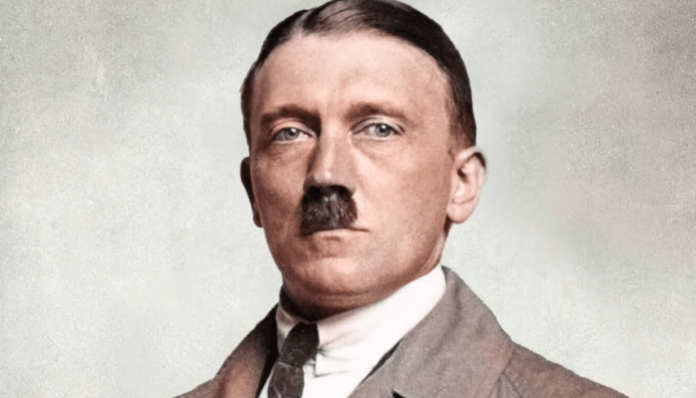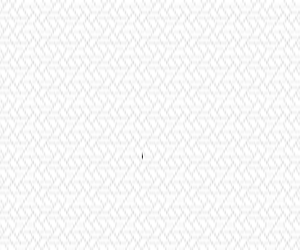The dictator Adolf Hitler, who ruled Nazi Germany from 1934 to 1945, is a figure whose actions and unique appearance have left a lasting impression on history. Hitler Hairstyle, which included a little mustache and a slicked-back side part that became symbolic of his persona, is among the most identifiable features of his appearance. Hitler Hairstyle has had a lasting cultural influence that extends beyond its historical background. It has occasionally surfaced in contemporary interpretations, artwork, and even popular culture. This essay will examine the meaning of Adolph Hitler’s hair, how it changed over time, and how this uncomplicated haircut came to represent one of the most notorious people in history.
Table of Contents
Hitler’s Hairdo: An Illustrated Account
Hitler had a fairly straightforward hairstyle, consisting of a slicked-back, straight hairstyle with a sharp side part, usually to the right. It gave the impression that he was disciplined, in charge, and uniform because of the short hair and careful grooming. Hitler was not the only one to adopt this style in the early 20th century; it was a reflection of the era’s neatness and orderly fashion trends. The mustache, which was dubbed the “toothbrush mustache,” went well with his hairdo and enhanced his unique image. Hitler’s trademark sharp part, smooth hair, and sparse mustache became an integral component of his public persona.
The Significance of Hitler’s Hairdo
Despite its seeming superficiality, Hitler Hairstyle played a major role in his meticulously crafted public image. His polished appearance was meant to convey authority, accuracy, and devotion to the principles he championed. The neatness and discipline of the style reflected the military principles that Hitler, as the head of the Nazi Party, promoted.
Observance and Order:
The neatly styled hair served as a visual depiction of the Nazi regime’s insistence on discipline, uniformity, and order. It implied that the state and its ideology came above the needs of the person. Hitler Hairstyle appearance—including his hair—was purposefully designed to convey power and dominance, supporting his autocratic authority and the rigorous discipline demanded of his followers.
Comparatively Speaking
Hitler Hairstyle also contributed to the difference between his persona and that of his political rivals, the Communists and Social Democrats, who sometimes wore less formal or more disheveled appearances.
He was trying to project a more conservative and tidy image by distancing himself from the bohemian or “free” looks connected to liberal ideas with his sleek, polished look.
The Effect of Hitler’s Hairstyle on Culture
Hitler Hairstyle look, especially his hairdo, had a long-lasting effect on popular culture and how specific styles are viewed. The majority of people successfully gave up this haircut after World War II in order to distance themselves from any perceived relationship with the Nazi leader because of how strongly it was associated with him.
Contemporary Meanings and Parodies:
Hitler Hairstyleo has been mentioned and mocked in a lot of movies, cartoons, and satirical writing over the years. It is frequently employed as a shortened symbol for despotism, tyranny, or evil in general.This style has been often used by comedians and satirists to mock autocratic individuals or to highlight political radicalism; the haircut acts as a visual cue that instantly conjures up images of Adolf Hitler.
Cultural taboo:
Due to its strong associations with Adolf Hitler Hairstyle, the once-common toothbrush mustache and slicked-back hairstyle have become practically unacceptable in contemporary society. Nowadays, very few would voluntarily adopt this approach out of concern that it would be seen as an attempt to elevate his reputation or as an endorsement of his ideologies. This relationship has produced a stigma around certain facial hair and grooming methods, particularly the toothbrush mustache, which has mostly fallen out of popularity since the mid-20th century.
Historical and Psychological Analysis
Psychologists and historians have conjectured extensively regarding Hitler’s fixation with his physical attributes, encompassing his hairdo. Hitler Hairstyle is said to have been extremely conscious of his public image, and his hairdo was essential to preserving his reputation as a tough, disciplined leader.
Propaganda and Graphic Design:
Hitler Hairstyle severe aesthetic standards served as a propaganda tool in addition to being a result of personal vanity. He was painted as the strong, resolute, and unwavering embodiment of the Nazi ideal through meticulous image management.
Hitler Hairstyle image as the head of the Third Reich was reinforced by the widespread distribution of photos, posters, and newsreels featuring him with his hair styled back and stern face.
Influence on Nazi-themed imagery
Hitler Hairstyle was incorporated into the Nazi regime’s overall visual brand. It wasn’t just about the leader; many of Hitler’s close allies and supporters took up similar looks to demonstrate their support for the cause.
Nazi officials’ homogeneous looks served to highlight the regime’s preoccupation with unity, conformity, and the repression of individualism.
Legacy of Hitler’s Hairstyle in Today’s World
Hitler Hairstyle Legacy in the Modern World Hitler Hairstyle is still a powerful symbol in the modern world. It functions as a visual shorthand for tyranny and authoritarianism in modern culture, frequently being utilized in political cartoons or other media to make comparisons between contemporary politicians and the notorious tyrant. Hitler’s relationship with the style has caused its connotations to significantly change, even though it was formerly a fashionable choice. This style is typically avoided in modern interpretations unless the goal is to stir thought or make a political or historical statement. It serves as a reminder of how even seemingly insignificant details of a leader’s look may accumulate into deeply embedded representations of their beliefs and deeds.
Conclusion
Beyond simple personal grooming, Adolf Hitler Hairstyle was a deliberate part of his identity, signifying his authority, discipline, and control. This hairdo has developed into a potent cultural emblem throughout the years, linked to the sinister legacy of Nazi philosophy. Despite their straightforward appearance, the toothbrush mustache and pulled-back hair have had a significant influence on popular culture, acting as a constant reminder of one of the most notorious people in history.





